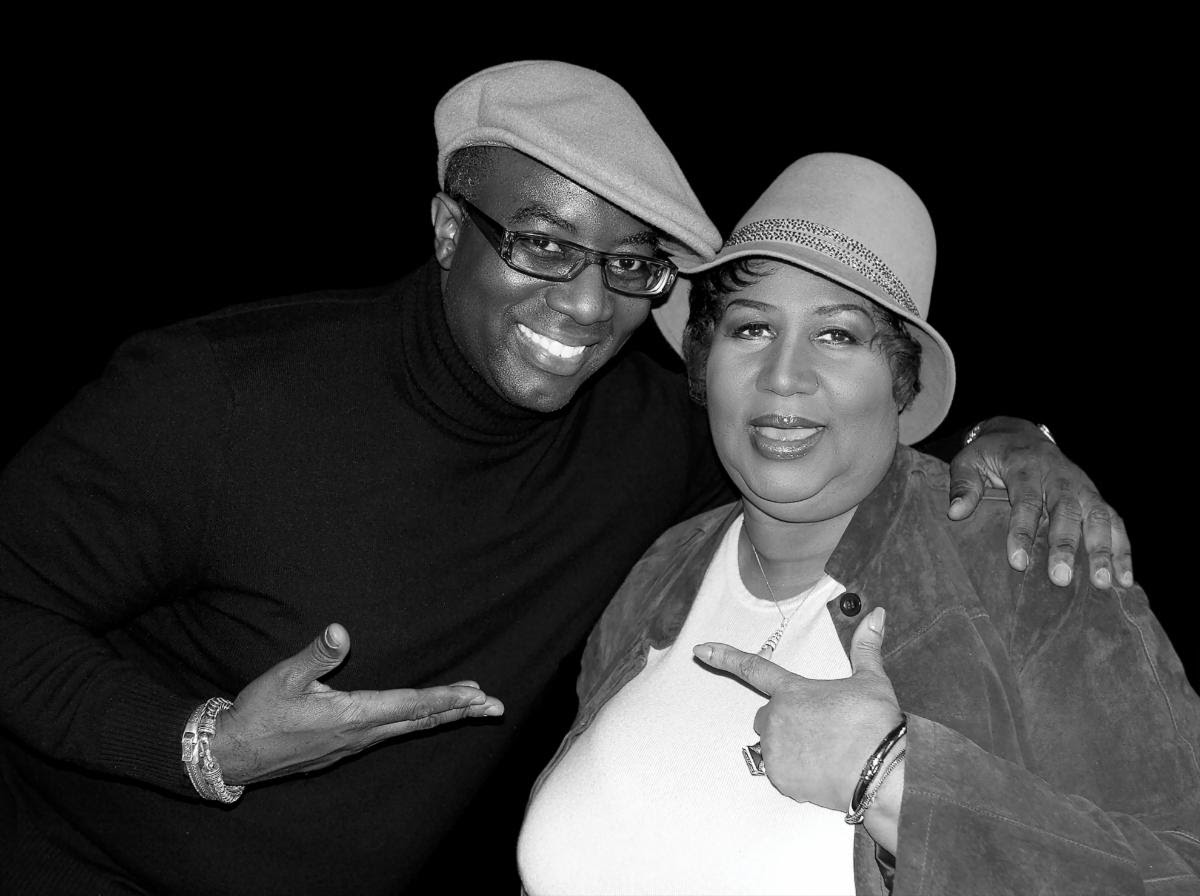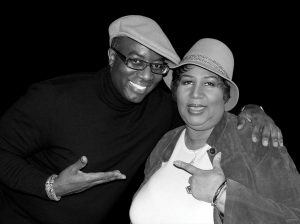
Photographer’s new book offers a unique look at Aretha Franklin
One of the best aspects of photographing Aretha Franklin — as Matthew Jordan Smith did frequently between 2005 and 2014 — was that she sang during their sessions.
“I had a playlist of my favorite Aretha Franklin songs, and she’d often start singing along — the only artist I’ve ever worked with who did that,” says Smith, 60, who’s just published “Aretha Cool: The Intimate Portraits,” a collection of his Franklin photos named after that playlist.
Photographer Matthew Jordan Smith recently published “Aretha Cool: The Intimate Portraits,” a photo book drawn from his many sessions with Aretha Franklin. (Photo courtesy of Matthew Jordan Smith)
“I remember the first time I used (the playlist), the one song comes on and she starts humming along to it, then she starts singing to the song — ‘You’re All I Need to Get By,’ one of my all-time favorite ones. I’m 4, 5 feet in front of her and I kinda forgot where I was and I started singing along with her.
“She stops me — ‘Jordan, baby, don’t sing.’ She said it firmly, actually, but the whole room burst out laughing. Then she starts laughing and the whole time I’m shooting everything. I love the pictures of her laughing that day, full-on, the whole room letting loose. Every time I hear that song, I think of that day.”
Those photos are among the dozens of images, and memories, that populate “Aretha Cool.” It’s a book Smith — who previously published “Sepia Dreams: A Celebration of Black Achievement Through Words and Images” — says he felt a call to create, the impetus coming from the death of Franklin’s longtime companion, Willie Wilkerson, from COVID-19 in April 2020.
“He’s the first person I know who passed from COVID, and I started thinking about how much things had changed, people we lost and the importance of legacy,” explains Smith, who remained close with Franklin until her death in 2018. “I thought: ‘OK. This book must be done. People have got to know about this side of her, from a photographer’s point of view and how it was for me working with her …’ cause there was nobody like her, and nobody’s really talked about or covered this last stage of her life.”
Smith — born in Brooklyn and raised in South Carolina, where his father exposed him to photography — was already a well-established high-end fashion and celebrity shooter when he met Franklin, whose work had appeared in international magazines and advertisements. When the Queen of Soul was looking for a new photographer in 2005, her publicist, Gwendolyn Quinn, recommended Smith, who had just published “Sepia Dreams.”
“I did my research,” he notes, and upon discovering that Franklin favored yellow roses, he sent her some with a note: “Looking forward to a great shoot. Looking forward to meeting you.”
“Then, before I got out there — we were shooting in Detroit — she called me on her phone, from her private number,” Smith recalls. “I’m like, ‘Who is this calling me,’ and then, ‘Oh, snap, it’s Aretha calling me!’ We talked about life, food. She said, ‘No photographer ever sent me yellow roses before.’
“Then we met and had a great shoot in Detroit, and we just kept going from there.”
Smith did make one minor faux pas during that first session, however. “The playlist — this was before I made the Aretha playlist — had Mariah Carey on it, and it looked like (Franklin) wasn’t into it,” Smith remembers. “I asked her who her favorite new artist was, and she said, ‘Me!’ And then I asked her again — new artist — and she said, ‘Me!’ Then it hit me. … Put some of her music on! Of course!”
This is one of Matthew Jordan Smith’s early portraits of Aretha Franklin. It’s included in his new book “Aretha Cool: The Intimate Portraits.” (Photo courtesy of Matthew Jordan Smith)
He went on to photograph Franklin on several occasions, in Detroit and New York — including a hat-oriented shoot following her performance of “My Country Tis of Thee” at Barack Obama’s first inauguration in January 2009. The images over the years were used for promotional and personal use and in a variety of publications and media outlets. They spoke on the phone frequently as well — even after Smith moved to Japan, where his wife is from, eight years ago, which initially made Franklin mad until he promised her “it’s only a flight.”
“A lot of stars are not comfortable being in the camera,” says Smith, who last photographed Franklin in 2014, though subsequent sessions were scheduled but canceled due to her deteriorating health. “There’s a facade that comes up. That’s normal, but she was not that way. She was very real from the jump and you could feel that, and you don’t get that every day with a lot of people, especially in Hollywood.
“She just had this very real feeling about her from the first moment I met her — no pretension, nothing, and I loved that. That made me feel more comfortable and made me feel like being myself. I think that’s what made us get along so well.”
Smith still has the iPod with the Aretha Cool playlist and has posted it on Spotify. Not a day goes by that he doesn’t think about Franklin, he says, and he’s hoping the book gives readers some sense of how special he found her to be.
“I want people to see the other side, the real side of her that I fell in love with,” Smith explains. “She was like an aunt that everybody knows. Everybody has an Aretha in their family. In Black America, we all have an Aretha in our family. I’ve shot so many people, but never felt the connection like I had with her. I’ll always miss her.”

